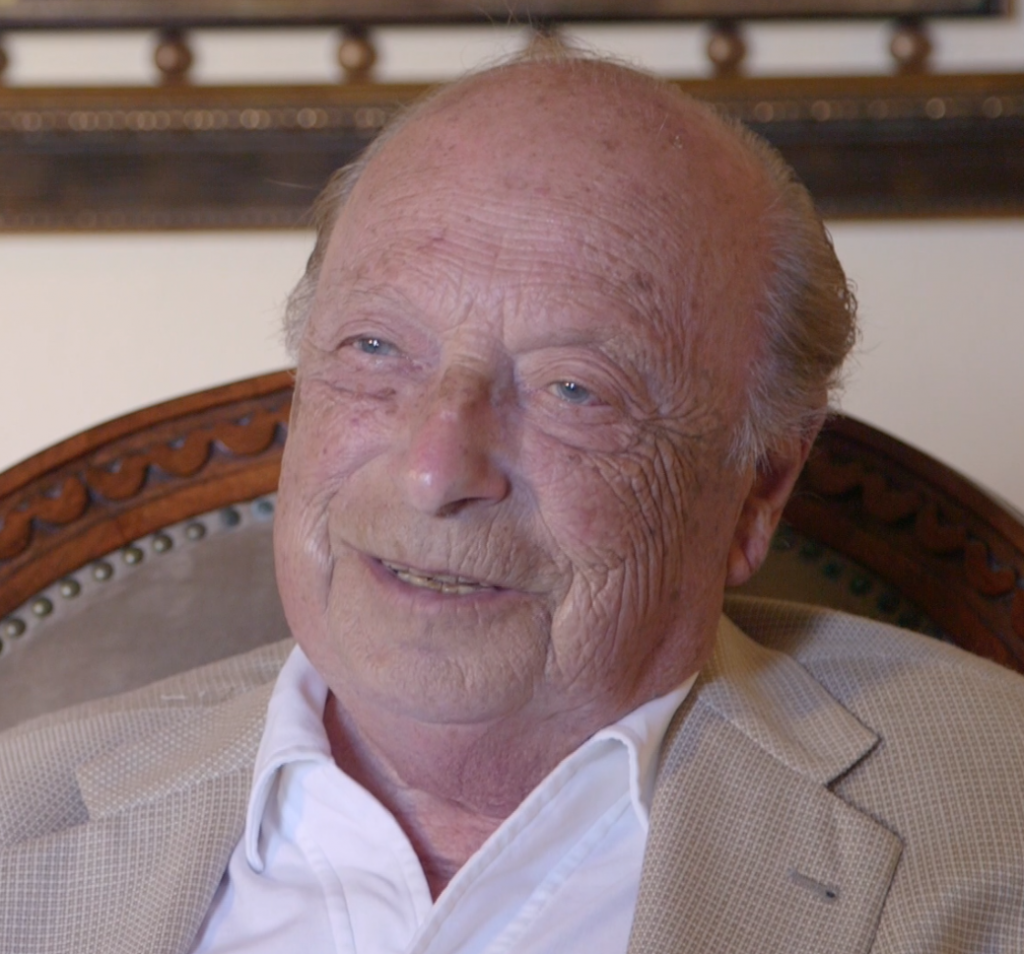Dr. Dieter M. Gruen is an internationally known German-American chemist, inventor, and innovator. Born in Waldorf, Germany in 1922, Dr. Gruen left Nazi Germany in 1936 to live with relatives in Little Rock, Arkansas, where he completed his high school education. Dr. Gruen and his parents were reunited in Chicago in 1939. Dr. Gruen attended Northwestern University and received his B.S. cum laude in chemistry in 1944. Shortly after his graduation, he was invited to join the Manhattan Project at the Clinton Engineer Works (Oak Ridge) in September of 1944 at the recommendation of Professor Irving Klotz, a Manhattan Project consultant. Dr. Gruen is the only graduate from Northwestern University to participate as a Manhattan Project scientist.
Dr. Gruen worked on the Manhattan Project in Oak Ridge, Tennessee from 1944 to 1946 on the electromagnetic separation of uranium isotopes. In response to difficulties determining the difference between uranium nitrate and uranium peroxide in the final stages of separation, Dr. Gruen created an entirely new chemical compound that allowed for the eventual extraction of uranium nitrate. Immediately after the war, Dr. Gruen helped form Oak Ridge Scientists and Engineers, a group dedicated to ensuring the future prevention of the use of nuclear weapons in war. In addition, Dr. Gruen returned to the classroom and earned an M.S. degree in chemistry from Northwestern University in 1947 and a Ph. D. in Chemical Physics from the University of Chicago in 1951.
Dr. Gruen joined the Argonne National Laboratory in 1947 becoming Senior Scientist and Group Leader in 1960 and Associate Director of the Materials Science Division in 1982. Dr. Gruen occupied this position until 2000 when he returned to full time research. Dr. Gruen became an Argonne Distinguished Fellow, Emeritus in 2012.
Dr. Gruen’s pioneering work as an early contributor to the emerging fields of Materials and Nanoscience has been recognized by numerous awards such as the 2000 Medal of the US Materials Research Society for the conversion of fullerenes to ultra-nanocrystalline diamond. Dr. Gruen was a Visiting Scientist in 1955 at the invitation of Professor Glenn T. Seaborg at the University of California in Berkeley; U.S. delegate to the Second International Conference of Peaceful Uses of Atomic Energy in 1958; Chairman of the Gordon Conference on Fused Salts in 1961; Visiting Professor at the Hebrew University in Jerusalem in 1969 and the University of Trondheim in 1973; organizer of numerous scientific conferences and symposia at national and international meetings; frequent lecturer at academic colloquia; prolific contributor to the scientific literature with over 400 peer reviewed publications; member of scientific panels and review committees; member of the board of editors of Applied Physics Letters and the Journal al of Applied Physics; mentor to undergraduate, graduate and postdoctoral appointees many of whom established subsequent distinguished careers in science.
Dr. Gruen’s work has consistently dealt with problems in alternative energy including the fields of fission, fusion and solar energy. Systematic work on the measurement of the magnetic susceptibility of neptunium compounds helped to solidify the detailed understanding of their electronic structure which led to the establishment of the trans-actinium elements as a 5f series. His work, starting in 1956, on the spectroscopy of fused salts created a new understanding of the complex solution chemistry of this important class of liquids which have found many uses, for example as the principal constituents of homogeneous thermal breeder reactors and as cheap thermal energy storage media in concentrating solar power plants. The development under his leadership of secondary neutral mass spectroscopy was used successfully to explore the interactions of thermonuclear magnetically confined plasmas with wall materials, a problem crucial to the successful operation of fusion reactors.
The novelty of Dr. Gruen’s work through the years resulted in over 60 US patents being granted to him for discoveries in interdisciplinary subjects. Several of these patents were licensed and some have led to the establishment of commercial enterprises that are still in operation.
Since becoming Emeritus, Dr. Gruen’s research interests have focused on making solar electricity cheaper so that the sun can more rapidly fulfill its destiny of becoming humanity’s global energy source. The Department of Energy recognized in its pathbreaking 2012 report entitled “SunShot Vision” that new breakthrough technologies are required in order to achieve this goal. The idea to combine direct (PV) conversion with indirect (thermal) conversion in a single facility is an obvious one dramatically to reduce the very large capital cost of Concentrating Solar Power plants, the single most important factor driving central station electricity costs. That idea cannot be implemented today because it requires solar cells that convert sunlight to electricity efficiently at temperature of about 400˚C. The current technology largely based on silicon solar cells fails because silicon cells cease to function at rather mild elevated temperatures.
Dr. Gruen conceived the idea in 2012 to use a graphene shell/wide band-gap nanowire core architecture to construct a new generation of solar cells that would in fact operate efficiently at high temperatures. Such a development would enable the single facility approach to central station solar power, double the efficiency for the conversion of sunlight to electricity and allow the cost of solar electricity to become competitive in the market place with electricity derived from fossil fuels. The novelty of this idea is enshrined in three basic US patents that were issued within less than two years after being filed. A European patent has also been granted.
Dr. Gruen currently serves as a Manhattan Project Veteran Advisor to the Atomic Heritage Foundation.
Thanks to David Wargowski for his contributions to this profile.





